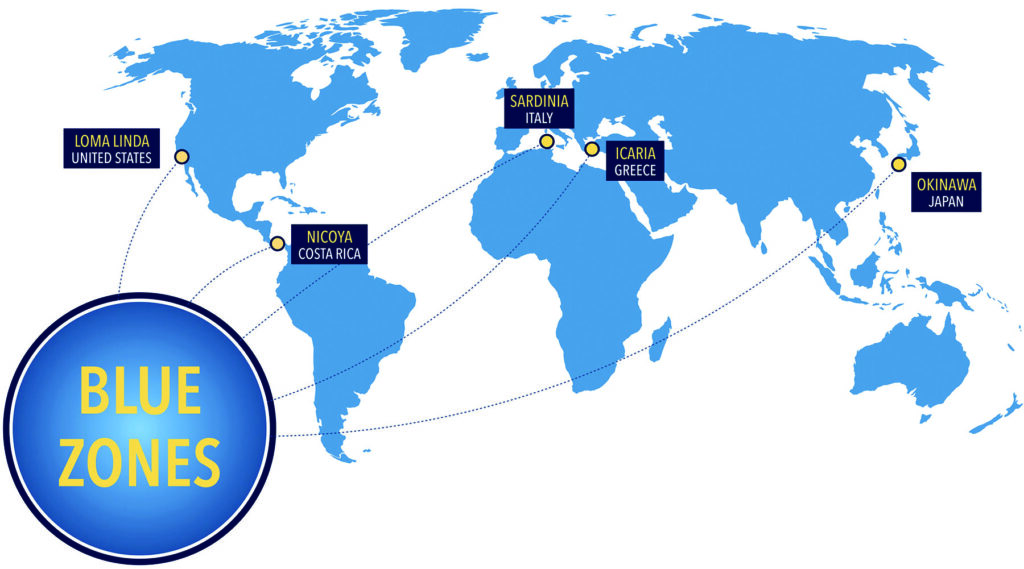In a quiet kitchen in Okinawa, Japan, an elderly woman prepares a simple meal of stir-fried vegetables, tofu, and seaweed. Outside her home, the lush green landscape buzzes with activity as her neighbors tend to their gardens or stroll to the local market. In the evenings, they gather for tea and conversation, sharing laughter and stories under the golden glow of lanterns.
That serene, communal day is a glimpse of everyday life in one of the world’s blue zones, places where living to 100 years old is not an anomaly but a way of life.
This scene is one of many peaceful routines featured in “Live to 100: Secrets of the Blue Zones,” a Netflix series that takes viewers on a journey through the lives and habits of centenarians from these longevity hotspots. The concept of Blue Zones was first introduced by researcher Dan Buettner in his book, The Blue Zones: Lessons for Living Longer from the People Who’ve Lived the Longest. In 2004, he joined a team of scientists to explore the secrets of longevity, identifying five regions around the world known for having populations with significantly longer and healthier lifespans, including the highest concentration of centenarians. Dan referred to these areas as “blue zones,” inspired by the blue circles that earlier researchers had drawn on a map to mark regions where people lived longer. His research revealed five places where people lived longer, healthier lives – Okinawa, Japan; Sardinia, Italy; Nicoya Peninsula, Costa Rica; Icaria, Greece; and Loma Linda, California.
Many believe that a focus on exercise and nutrition requires a large amount of willpower, but for people in blue zones, healthy habits come a lot more naturally. Instead of depending on fitness trackers, gyms or special diets, these communities weave movement and nutrition into their way of life and sense of purpose, says Dr. Robert J. Pignolo, a Mayo Clinic physician-scientist.
Living the Blue Zone Way
While the specific diets and lifestyles of blue zone populations vary from region to region, these communities share some common traits, and you don’t need to move to the lush hills of Sardinia or the peaceful villages of Okinawa to adopt these lifestyle practices.
Exercise through everyday activities: In blue zones, exercise is not reserved for the gym, it is woven into daily life. According to the Mayo Clinic, some examples include sheep herders in Sardinia, Italy, who traverse at least five miles daily across rugged mountainous terrain. In Okinawa, Japan, most people tend gardens daily, growing produce they consume and share with their neighbors.
Consider ways to move with purpose by gathering with friends for a round of tennis or bike ride, or enjoying an active hobby like dancing or hiking.
Nourish your body: People in blue zones eat small, balanced meals that are full of plant-based foods and whole, unprocessed foods high in nutrients and low in unhealthy fats and sugars. They practice the “80 percent” rule: savoring food and eating until about 80 percent full, which encourages eating in moderation and avoiding overindulgence. Dr. Pignolo advises small changes such as serving yourself moderate portions — no seconds or super-sizing, or perhaps switching from a full-size dinner plate to an appetizer-size plate.
Find your purpose: In blue zones, purpose is also integrated into everyday life — a reason to get up in the morning, as Okinawans describe it. To embrace a sense of purpose, consider ways you can give back to those around you. Consider lending a hand at a local food pantry or giving rides to homebound seniors. Or consider sharing your professional expertise in your community; e.g., if you have professional expertise in finance, volunteer to teach financial literacy workshops to youth.

